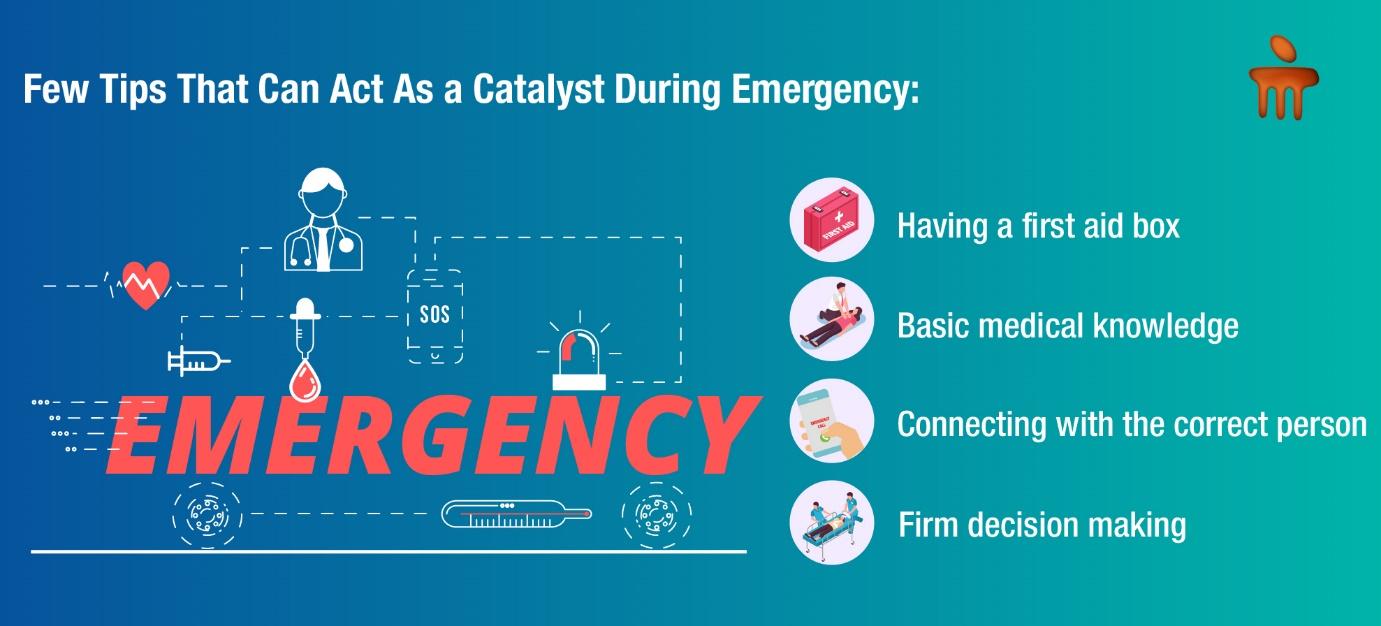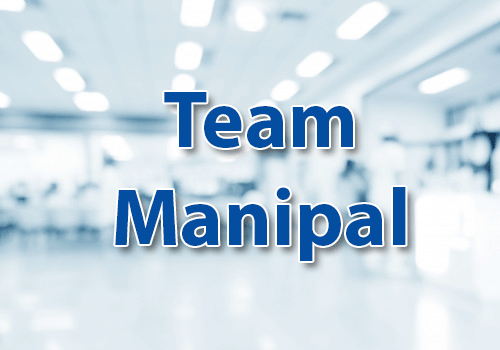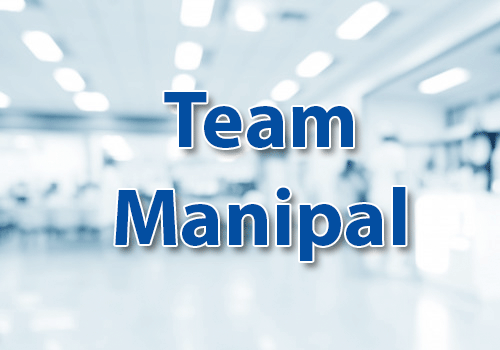
Life is unpredictable and very uncertain when any medical emergency can come. Most often, things happen at a pace that leaves us little time to process. Therefore, it is advised to be prepared well on time and with all the means and the best knowledge to deal with it. Knowing what to deliver at what time is one of the most important calls that can be helpful for someone, and one can, of course, handle the situation better.

Here are a Few Tips that can Act as a Catalyst in any Emergency
-
First-Aid Box
A first aid box should act as a one-stop solution when any medical emergency is observed. The first box should contain creams, solutions, gauze, scissors, essential medicines, thermometers and everything considered necessary. A first aid box should be kept in a place that is easily accessible to everyone. Before using anything from the first aid box, check the expiry dates.
-
Basic Medical Knowledge
Basic medical knowledge can help the person serve the patient. Knowing the primary symptoms, causes, and how the emergency can be cured can be the key to saving someone's life. Seizures, breathing difficulties, strokes, heart attacks, head injuries and burns are some of the most common medical emergencies that are most frequently observed. Hence, it is also advisable to know everything about emergency procedures for first aid.
-
Contacting the Correct Person
Contacting the correct person on time can include the Doctors, family members and other immediate contact persons of the person experiencing medical problems. It is advisable to connect with the correct person, depending on the medical emergency the person is experiencing. However, Doctors are always considered the first choice of the person.
-
Firm Decision Making
Healthcare can be very costly during any medical emergency. Therefore, it is important to take decisions wisely at a given time. Advisable to take help of the people around to maximise the knowledge. Seek help in terms of their medical expertise and the contacts they have. Use it to the fullest so that the life of an individual can be saved.
The points mentioned above are subject to situations and medical emergencies. Hence, it is advisable to take the decisions cautiously during any medical emergency. Use the knowledge and experience to save the life of an individual.
5 Most Common Medical Emergencies and How to Deal with Them
To help further, here are the most common 05 medical emergencies and how one can react to help the patient. Continue scrolling to know more:
Deep Cuts
Deep cuts are one of the most common medical emergencies. Deep cuts are not necessarily caused due to knives, but there are a few other cuts that can be classified as follows:
-
A sharp instrument like a razor causes incised wounds.
-
Lacerated wounds, caused by machinery, animal claws etc.
-
Contused wounds, are caused by crushing that is also accompanied by bruising of the tissues.
-
Puncture wounds are caused by any pointed instrument like needles, knives and scissors with small sharp openings that give an intense cut.
In case of wounds, follow the steps below:
-
Make sure the patient is sitting in a comfortable position where the bleeding part is elevated. Make sure not to disturb any blood clots formed.
-
Removing as little clothing as possible exposes the wound.
-
Try to maintain constant direct and indirect pressure.
-
Apply a clean dressing and bandage.
-
Immobilise the injured part. Make the best use of splints for immobilising the wound.
Remember that if there is an immovable foreign body in the wound, you should treat it, add enough pads to the area around it, and avoid putting any pressure on the immovable object.
If there is no foreign object in the wound, but the cut is deep, use enough padding to cover the incision's depths and ensure the pads extend well above the skin's surface to provide appropriate pressure to the blood vessels torn ends. Create an emergency medical list or keep the contact details for the Accident and Emergency Care Department Contact on the speed dial for times like this.
Fracture
A simple fracture is when no wound leads down to the broken bone.
General symptoms and signs of a fracture:
-
Constant pain at or near the seat of the fracture
-
Tenderness or discomfort on general pressure over the fractured area
-
Visible swelling at or near the wound. This swelling frequently renders it difficult to perceive other signs of fracture, and serious care must be taken without underestimating the seriousness of the condition.
-
Deformity of the limb
-
The irregularity of the bone.
General rules for the treatment of fractures are:
-
If the patient's life is in danger immediately due to another factor, only move them after the wounded area has been immobilised. However, if the situation prevents total final immobilisation from being done immediately, perform a temporary repair to allow the patient to be transported a short distance to a more acceptable location.
-
Before treating fractures, one must address haemorrhage and severe wounds while considering the needs of both types of injuries.
-
Steady and support the injured parts simultaneously, making movement impossible. This prevents further injury and increased bleeding which always occurs at the fracture's site. It also prevents broken bone ends from piercing or damaging the skin, blood vessels, nerves or muscles.
-
Prevent the use of bandages or splints at the time of fracture. Instead, use the patient's body as a means of support.
- The Use of Bandages
Avoid applying a bandage on the fracture. They must be used so that it is not too tight or loose since if it is too close, it will permit blood circulation, which isn't good practice to take care of.
Heart Attacks/Chest Pain
Heart attacks/chest pain is one of the most common medical emergencies that occurs when the blood supply is lost to the heart. This occurs when a blood clot blocks an artery that supplies blood to the heart muscles.
Symptoms of Heart Attack/Chest Pain:
-
Pain and discomfort in the chest area
-
Shortness of breath
-
Stomach discomfort
-
Fainting
-
Pain in the neck, jaws or shoulders.
It is observed that the symptoms of heart attack for both men and women are different. Men usually have cold sweats and continuous pain in them all through the left arm. But women, are likely to experience shortness of breath upset stomach accompanied by dizziness and tiredness.
Treatment of Heart Attack/Chest Pain
It is a proven fact that the first 90 minutes are considered to be very crucial in terms of saving the life of the patient. An aspirin tablet can be given before the patient reaches the hospital since it lowers the risk of clotting.
If nothing is working or the patient isn't breathing normally, or the patient is unresponsive then CPR (Cardiopulmonary resuscitation) may be applied to double the chances of survival.
Burns and Scalds
People often think burns and scalds are synonymous, but they are different. Burns can be caused by dry heat such as fire, hot metal, or contact with an object with high electric tension. However, scalds are caused by moist heat like boiling water, hot oil etc.
Effects of Burns and Scalds:
-
Reddening of skin
-
Blister formation
-
Tissue issues
-
Destruction of the skin.
Basic rules for treatment:
-
Avoid touching the burnt area. Make sure before touching the burnt area, make sure that your hands are clean and germs-free.
-
Do not apply lotions of any kind.
-
Do not remove burned clothing and do not break blisters.
-
Cover the area (including burned clothing) with a dry sterile dressing or similar material such as clean lint or freshly-laundered linen.
-
Bandage firmly, except when blisters are present or suspected, in which case, the bandage lightly.
-
Immobilise the area by suitable means.
-
Treat for shock.
-
Take the patient to the hospital in a significant burn case as soon as possible since the patient will require an anaesthetic, so don't give oral medicines.
It is advisable to get detailed knowledge of emergency medicine through the emergency specialist doctors in Bangalore, or call Manipal's emergency ambulance services because that would help you in so many ways in these situations.
Electrocution
Electrocution is caused by touching a live, naked wire, cable or rail. A shock may be mild or extremely severe. Burning is an immediate result of a shock. These burns may be painful, especially with higher voltages.
Prompt action can aid the patient's life in case of a shock. Perform the following steps.
-
Switch off the current; if it cannot be put off, cut off the supply by removing the plug, breaking the cable, or wrenching it free. Never attempt to cut a cable with a knife or scissors.
-
With the help of dry insulators, remove the patient from contact with the current. For example, domestic apparatus, gloves, clothes and newspapers can give fair protection.
-
Reassure the patient.
-
Try to lay the patient down on their back, with the head low and turned to one side. This practice should be done in all situations unless there is an injury in the head, chest and abdomen.
-
Loosen clothing around the neck, chest and waist.
-
Wrap them in a blanket or rug.
-
Give sips of water, coffee or any liquid but never alcohol.
As per human nature, the immediate response to an injury is panic. However, panic can be replaced with calmness to give a better and more helpful aid. Follow the steps, and indeed every medical emergency will be a success. Fret not, Manipal Hospitals is regarded as India's best medical emergency hospital that offers the best emergency health services and emergency response guide for critically ill patients.





















 4 Min Read
4 Min Read









